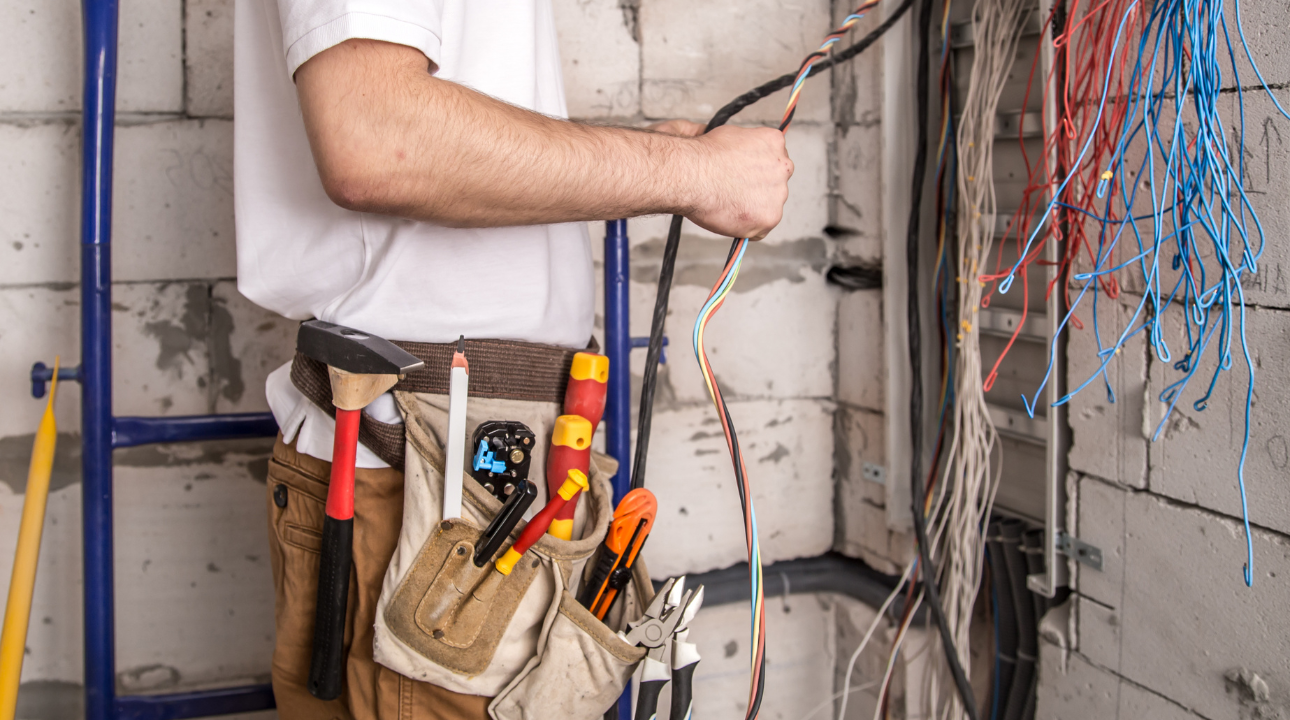Flooring does more than provide a surface to walk on, they also play a major role in how sound travels within a home or commercial space. Noise between floors can be frustrating, whether it’s footsteps overhead, voices from below, or vibrations from household appliances. The need for peace is a practical necessity for comfortable living and productive workspaces.
Soundproofing floors is not only about insulation or thick carpets. It’s a thoughtful approach that considers floor construction, material type, installation techniques, and how sound interacts with each layer. Each flooring choice contributes differently to sound control, from hardwood to laminate, tile to vinyl. And if you’re shopping at a flooring store working with a contractor, knowing the right questions to ask can make a big difference in results.
Before making any changes, understanding the science and strategy behind soundproofing floors can help you choose smarter, spend more wisely, and achieve the kind of quiet you’re looking for, whether it’s for a multi-level home, office building, or apartment unit.
Understanding Floor Soundproofing Basics
Soundproofing a floor means reducing two main types of noise:
- Airborne Noise: Sounds that travel through the air, like talking, music, or television.
- Impact Noise: Sounds resulting from physical contact, such as footsteps, dropped items, or moving furniture.
Effective floor soundproofing addresses both. The strategy involves dampening vibrations, blocking sound paths, and isolating materials from transmitting sound waves. Let’s look at the key principles.
Mass, Damping, and Isolation
- Mass: Heavy materials help block airborne noise. Adding weight to flooring assemblies (like dense underlayments or thicker subfloors) increases sound resistance.
- Damping: Damping materials absorb sound energy and reduce vibrations. These materials are often installed between floor layers to neutralize movement and noise.
- Isolation: Creating separation between materials (like floating floors or resilient channels) helps break the sound path, stopping noise from traveling through a structure.
Combining these elements is essential for a complete soundproofing solution.
Popular Flooring Materials and Their Sound Properties
Not all flooring materials perform the same when it comes to noise control. Here’s a breakdown of how common choices rank for soundproofing effectiveness:
| Flooring Type | Airborne Noise Control | Impact Noise Control | Soundproofing Potential |
| Hardwood | Low | Low | Moderate with underlayment |
| Laminate | Low | Low | Moderate with foam padding |
| Vinyl Plank | Moderate | Moderate | High with acoustic layers |
| Carpet | High | High | Excellent |
| Tile | Low | Very Low | Poor unless the underlay is used |
| Engineered Wood | Moderate | Low | Moderate with upgrades |
To improve performance, acoustic underlayments or additional layers can significantly boost a material’s soundproofing.
The Role of Underlayments in Floor Soundproofing
Acoustic underlayments are one of the most important tools in floor soundproofing. They go between the subfloor and the finished flooring and come in a range of materials.
Common Underlayment Types
- Foam Underlayment: Basic but effective for laminate or engineered wood floors. It reduces minor noise and softens footfall.
- Rubber Underlayment: Offers excellent impact and airborne noise reduction. Works well under tile, hardwood, and luxury vinyl.
- Cork Underlayment: Natural, eco-friendly option. It resists mold and provides moderate soundproofing for wood and tile flooring.
- Felt Underlayment: Often made from recycled fibers, it offers solid acoustic performance under hardwood and laminate.
- Combination Underlayment: Some underlayments combine materials like rubber and foam for multi-layered performance.
Choosing the right underlayment at a store often depends on the type of flooring and noise problem you’re trying to solve.
Installation Techniques That Improve Soundproofing
Proper installation is just as important as material selection. Here are techniques that contribute to better floor soundproofing:
Floating Floors
Floating floors aren’t nailed or glued down. They “float” over an underlayment. This isolates the flooring from the subfloor and reduces vibration transfer.
Double Layer Subfloors
Using two layers of subfloor with damping material like Green Glue between them increases mass and absorbs sound energy, enhancing both airborne and impact noise resistance.
Acoustic Sealants
Gaps and edges matter more than most people think. Acoustic sealants prevent sound from slipping through cracks and improve overall performance.
Decoupling Techniques
Separating structural elements like joists and floors with resilient channels or sound clips can reduce structure-borne noise effectively.
Soundproofing Multi-Level Homes and Apartments
Soundproofing needs can vary widely between single-family homes and multi-unit buildings. Here’s what to consider:
For Homes
- Bedrooms above living areas often benefit from carpeted floors or upgraded vinyl with underlayment.
- Home offices might require targeted solutions like area rugs with sound-absorbing pads.
For Apartments and Condos
- Impact noise rules are often stricter, especially for upper floors.
- Check building codes or HOA guidelines before installing hardwood or tile, some may require specific underlayments or certifications.
A visit to a flooring store in Atlanta that’s experienced with local codes can help ensure you choose flooring materials that meet both soundproofing goals and community regulations.
Combining Soundproofing with Thermal Insulation
In many climates, it’s smart to combine acoustic upgrades with thermal insulation. Materials like cork or rubber not only muffle sound but also offer moderate thermal resistance.
Benefits of Multi-Purpose Materials
- Increased energy efficiency
- More comfortable floors year-round
- Reduction in both sound and utility bills
This approach is particularly useful in basements, attic conversions, or sunrooms where temperature and sound both need attention.
What to Consider Before Starting Your Soundproofing Project?
Before jumping into a full soundproofing renovation, take the time to assess your space and needs.
Evaluate the Noise Problem
- Is the issue airborne or impact?
- Does it involve specific rooms, or is it throughout the building?
Set Your Budget
- Costs can vary depending on materials and installation complexity.
- Investing in higher-end underlayments often gives better long-term results.
Work with the Right Professionals
- Flooring contractors with soundproofing experience can offer tailored advice.
- A reputable flooring store in Atlanta can suggest material combinations that match your space, needs, and price range.
DIY vs. Professional Installation
Soundproofing can be done as a DIY project, but results vary based on skill level and materials used.
When DIY Works?
- Installing foam underlayment beneath floating laminate or vinyl planks.
- Adding rugs or mats for minor improvements.
When to Call the Pros?
- Retrofitting tile or hardwood floors with rubber or cork underlayment.
- Building a double subfloor or using resilient channels.
- Working in spaces with code requirements or structural concerns.
Professional help ensures materials are properly installed for maximum sound-blocking benefits and long-term durability.
Common Mistakes to Avoid
Soundproofing projects can fall short due to a few easily avoidable mistakes:
- Ignoring Impact Noise: Simply choosing a thick carpet doesn’t address footstep thuds unless it’s paired with the right padding.
- Skipping the Underlayment: Even the best flooring materials need a proper base to reduce sound.
- Poor Sealing: Sound can slip through unsealed edges, corners, or vents.
- Assuming All Noise Comes from Above: Walls and ceilings often contribute to overall noise levels and may need attention, too.
Bottom Line
Soundproofing floors is a smart investment in comfort, privacy, and peace of mind. Every step plays a role in how well your space blocks or absorbs sound, from selecting the right materials to proper installation. Understanding the noise types, choosing appropriate flooring, and working with professionals can reduce disturbances. A calm, quiet space starts from the floor up.
Rustic Wood Floor Supply offers a wide range of soundproof flooring options, underlayments, and expert guidance. Regardless of whether upgrading a home or building a multi-unit complex, we help customers find the best materials at competitive prices.
Visit our showroom or speak with our specialists to learn how to make your space quieter and more comfortable!



